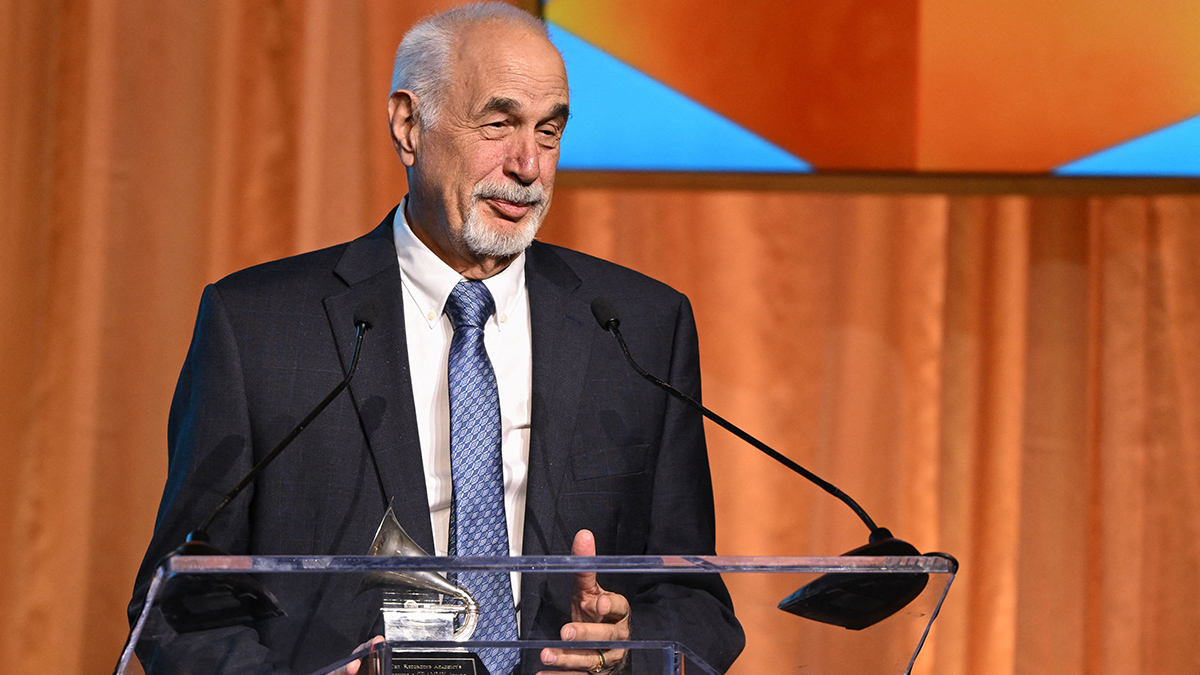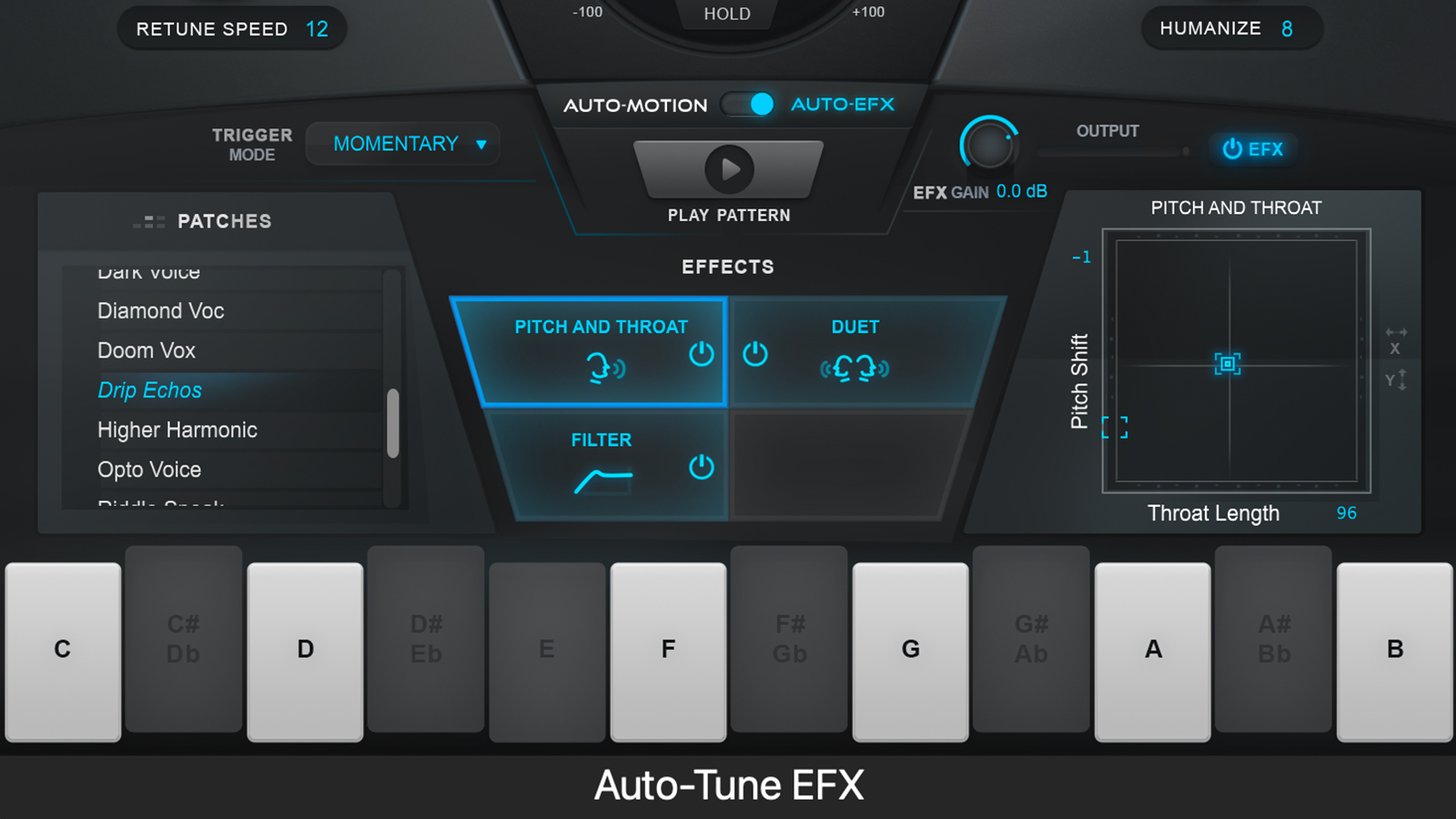"I was kind of playing around with the Auto-Tune, as it's called": How Cher's Believe changed pop music forever
Auto-Tune not only rescued Cher's Believe but kickstarted an entirely new chapter in pop music history. Here's the story of the massive 25-year old hit record and the software behind it

Cher's Believe is, unbelievably, 25 years old this month, and as well as being a song that helped launch yet another phase of the singer's extraordinary career, it also heralded the mainstream arrival of a new vocal effect that, love it or hate it, is still with us today.
The geologist turned inventor
That 'Cher effect' vocal - the synthesised, hard-tuned and almost robotic-like sound you hear in Believe - was, of course, created using Antares Auto-Tune.
I had producers ripping it out of my hands.
Andy Hildebrand, inventor, Auto-Tune
Auto-Tune has since been widely used in many genres of music including pop, country, dance and hip-hop. At extreme settings, it can be applied to main and backing vocals for everything from cartoon-style to sci-fi effects. Used more conservatively, it can be employed simply as a tuner, to make sure slightly out-of-tune vocals remain in key.
In fact, this subtle and more human style tuning is what the software was originally designed for, but it was only when it was pushed to its extreme settings that the more synthetic effect was discovered and Auto-Tune took on a creative life of its own.
The software was invented by Dr Andy Hildebrand, a former geophysical engineer who had originally devised auto-correlation algorithms that employed seismic waves to help discover sites to drill oil.

A far cry from Auto-Tune, you might think, but after leaving the oil business and returning to his love of music, Hildebrand employed similar DSP programming skills to music software and founded Jupiter Systems in 1990 after developing some audio sampling software.
Five years later, Andy was at a meeting at the NAMM show when the wife of a business partner challenged him to come up with an application to help her sing in tune.
Want all the hottest music and gear news, reviews, deals, features and more, direct to your inbox? Sign up here.
Little did she realise what her request would lead to.

"At the same trade show a year later I had producers ripping it out of my hands," Hildebrand told vice.com of the first version of Auto-Tune which came out in the mid '90s. But even after this positive reaction, it would take a couple of years for Hildebrand to fully realise what he'd unleashed upon the music listening public, and that realisation came by way of a music icon.
Cher's Believe
Mark [Taylor, producer] hated what I was doing and he kept saying to do it better. We had a huge fight.
Cher on recording Believe
"The most fun I ever had making a song was Believe,” Cher told Billboard in 2015. "Because you didn’t know it was me in the beginning, and I was so excited."
Cher was talking about the heavy processing of her vocals in the track, and when asked if the effect was intentional, she replied: "No, it just came out of desperation."
The use of the effect, she revealed, was almost the last throw of the dice for the song. But actually this was just the latest chapter in the track's difficult history. By the time it had reached Cher and producer Mark Taylor for its recording, Believe had already passed through a team of six songwriters and had been several years in the making.
So when Cher and Taylor were recording it, there was already pressure to finally nail it and get Believe exactly right. But when it was finally ready for the vocals, Cher and Taylor locked horns over the style and that 'fun' Cher would later say she was having was nowhere to be seen.
"Mark hated what I was doing and he kept saying to do it better," Cher said. "We had a huge fight and I said, 'Well, if you want it better, get somebody else.' And I walked out."
Luckily, Cher then saw UK singer Roachford on TV using a vocal effect and was so struck by it that she took a CD of the track in for Taylor to listen to. He told her he'd been experimenting with a 'pitch machine' and would see what he could do.
That 'pitch machine' would turn out to be Auto-Tune, although Taylor would try and keep this a secret in later interviews, stating that it was a Digitech Talker that he'd used to throw people off the scent!
In 1999, he told Sound on Sound: "I played around with the vocals and realised that the vocoder effect could work. I used a Digitech Talker, a reasonably new piece of kit that looks like an old guitar foot pedal, which I suspect is what it was originally designed for. You plug your mic straight into it, and it gives you a vocoder-like effect, but with clarity; it almost sounds like you've got the original voice coming out the other end."

Taylor eventually revealed the truth about the process to The South Bank Show: "I was kind of playing around with the Auto-Tune, as it's called. With this you can shift the vocal, [and] go to to the nearest note. And then what it does is if you bend a note when you're singing, all this does is it goes along and it doesn't bend a note up until it reaches a certain point and then it just flicks to the nearest note, so you end up with these very 'steppy' sounds. Every note is an exact semitone. There is no sliding and that's where you get this crazy sound."
Cher heard the results of Taylor's pitching experiments and loved them: "I came back the next day and he started to play it for me. We were high-fiving and jumping up and down. And then it was great and everyone loved it."
Believe, of course, then racked up the stats. It spent seven weeks at number one in the UK, and was the country's best-selling single by a solo female artist (close to two million sales). It also hit number one in 23 other countries including the US, and sold over 11 million in total, helping the album of the same name to shift some six million copies.
Forget those stats, though, because what happened next was even more unbelievable.
Can you believe the impact?
I just build the car. I don't drive it down the wrong side of the road.
Auto-Tune inventor Dr Andy Hilderbrand
With that many sales it wouldn't take long for the rest of the pop world to catch on to the sound of Auto-Tune - and for other plugin developers to get their versions of the software out there. Perhaps the biggest surprise was the breadth and depth of the use of the software, though, particularly in its early days.
Whereas now the Auto-Tune effect is more regularly applied to the lead vocal to create that recognisable 'step' jumping effect in pop music, early usage was more varied. There was this cartoon-like backing vocal application in the country music of Faith Hill's The Way You Love Me, for example…
Never ones to be afraid to twist and turn a bit of technology, Radiohead (allegedly) used Auto-Tune on their 2001 album Amnesiac, in particular the track Pulk/Pull Revolving Doors.
But it was in hip-hop where Auto-Tune would be more readily embraced any other genre, with its biggest stars adopting the software seemingly en masse. Kanye's Heartless, Snoop Dog's Sensual Seduction and Drake's In My Feelings are just a few of the highest profile examples of Auto-Tuned hip-hop.
While T-Pain almost made the effect his own, with tracks like this…
In fact, some of the biggest stars in the world have employed the effect to a greater or lesser extent, regardless of genre. Here's possibly the biggest (and best) Auto-Tune hit that wasn't Believe.
The Auto-Tune legacy
Auto-Tune has become a constant presence in our charts, used both as an obvious effect in many a hit and a not so obvious, subtle tuning device in even more. And it looks set to stay that way.
So what does inventor Dr Andy Hildebrand think of his software's impact? Initially he was surprised by Cher's use of Auto-Tune's harder tuning capability: "I almost didn't put that feature in the software," he told vice.com, "but I was told, 'Why not, you know? It won't hurt.'"
And of the 25 years of Auto-Tune hits?
"It's a bit overused in general," he says. "It's become an effect that people recognise and say, 'Oh, that's Auto-Tune'. What they don't realise is that Auto-Tune is in many songs where you don't hear it being used, and that's the way it was intended. I just build the car, I don't drive it down the wrong side of the road."
In celebration of the 25th anniversary of Cher’s Believe, the Believe (Deluxe Edition) album - a 3LP/2CD/Download and streaming package - will be released on 3 November on Warner Records.
- Read more: How to enhance your vocals with Auto-Tune


Andy has been writing about music production and technology for 30 years having started out on Music Technology magazine back in 1992. He has edited the magazines Future Music, Keyboard Review, MusicTech and Computer Music, which he helped launch back in 1998. He owns way too many synthesizers.
